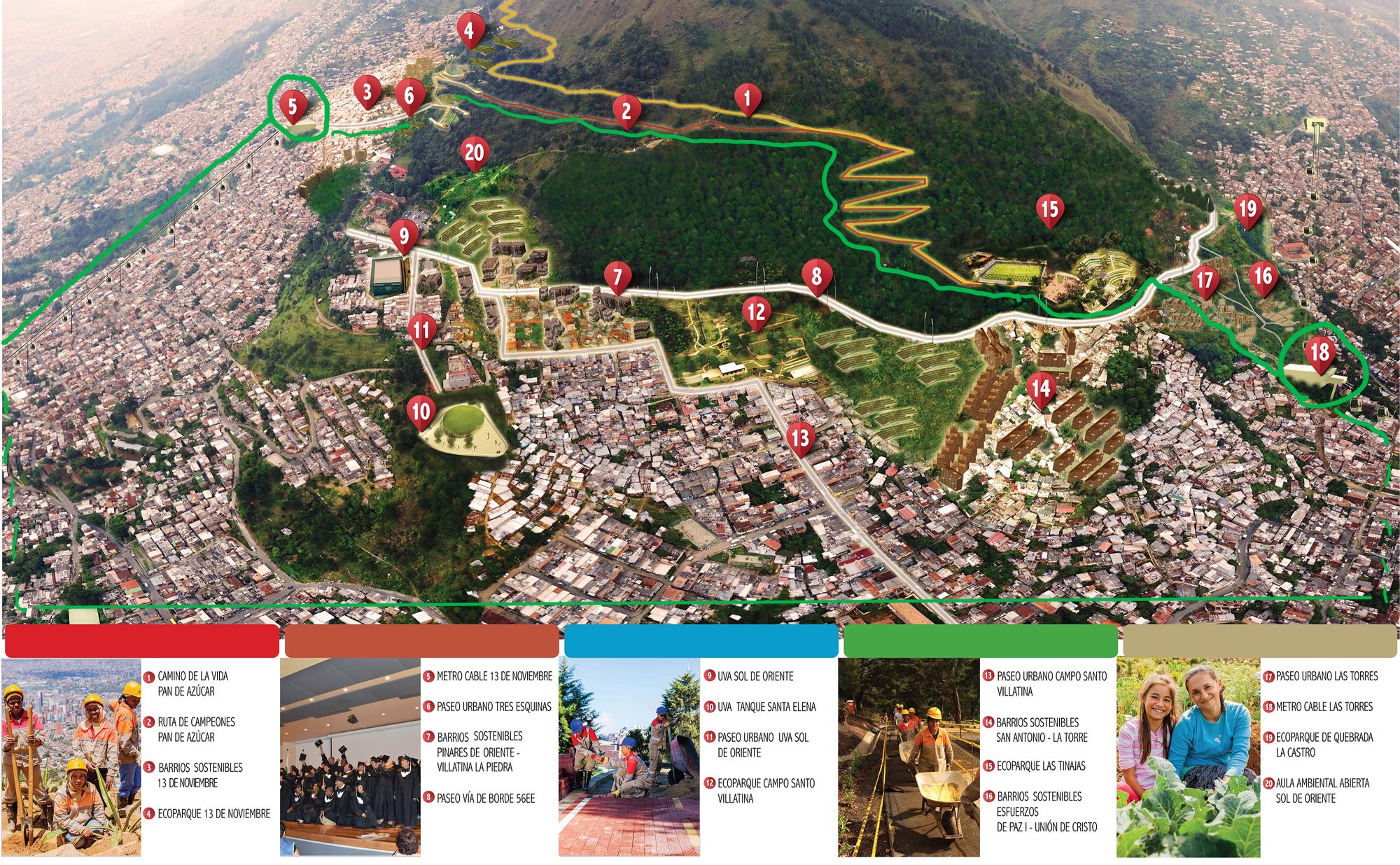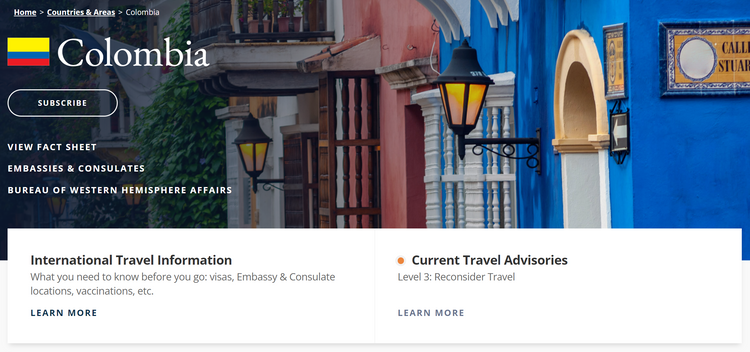Street Smarts in a "Dangerous Neighborhood"

In December we moved into a Medellín apartment that looked onto a hill, Pan de Azúcar. From our living room, we could watch the cable cars go up the west side of the hill and end 3 blocks before a forested park at the top.
Unfortunately, we received conflicting information from our trusted sources about whether it was safe to walk through the neighborhood on the west side. Two Colombian friends (middle class, not from the neighborhood in question) told us it wasn’t safe; they were concerned about robberies for themselves and for us. Two long-term resident foreigners (tall white men) specifically recommended the hike, having gone various times. So now what?
Our personal experiences and what we’ve been told inform our opinions. I note some aspects of the identities of those who give me advice, not to discount their view, but to consider the potential context in which their views have been formed. Could their physical appearance make them more or less at risk? Could there be faulty stereotypes at play? In the US context, I question which is more dangerous – the neighborhoods learned to avoid or our unexamined stereotypes.
At first, I was nervous, so I went with a “No, for now.” decision. Then we hiked the eastern route to the park with our neighbors, a longer way around and through a neighborhood they recommended. After being in Medellín for a few months and having a better feel for the city, norms, and the area, I decided it was time to consider the west side hike again.

Imagining Impact
What’s the worst that can happen? Can I live with that? It helps me to intentionally consider the worst-case scenario. In this situation, the purported worst was being robbed. I can live with the loss of items and recover from the emotional experience with my current support systems.
What’s the outcome I hope for? To find a nice route to make the hike a full loop! This is clearly what the city was aiming for with their investment in the park. And, I hope to have my own read on whether the neighborhood is actually dangerous for me.
Considering all the information I had, including my sense of myself and the area, I truly thought (and still think) the risk is quite low. I decided to go for it – while being street-smart. To me, that means minimizing the negative impact, minimizing risk, and maximizing positive potential.
Minimizing Negative Impact
I left my phone at home; my husband took his phone (which is old and insured). We took our metro cards for the cable car ride, one pair of house keys, water, and only the cash we were willing to part with. I grabbed a $20 (100,000 peso) bill that could easily be handed over to someone if necessary to hopefully deter further engagement.
Minimizing Risk
In addition to minimizing the impact if the worst happens, I tried to minimize the likelihood of something going wrong:
- I went with my husband. People are more likely to leave me alone if I’m with him – for better and worse. When solo, people are more likely to talk to me and offer assistance when I need it (and when I don’t).
- We went on a sunny Wednesday morning. Seems like a time of day when people are just going about their business and not waiting around for someone to rob.
- We walked with some confidence, like we knew where we were going, at about the same pace as others on the street.
- We carried ourselves with moderate openness and warmth toward others, initiating & exchanging greetings when it made sense to do so.
- We did not take pictures on the walk. If someone doesn’t know where your phone is, it is harder to lift.
As the only gringos around we didn’t blend in but hopefully, we didn’t look like a lost, easy target.
Maximizing Positive Impact
Being alert and aware feels different than being anxious and worried. Thinking through all this didn’t leave me anxious; if it had, I likely wouldn’t have gone. Getting ready for the hike, I felt calm, appropriately confident, and ready for the experience.
Enjoying the walk
We had a lovely walk! The cable car bird’s eye view of the neighborhoods and valley was superb. And WOW the 3 blocks to the park entrance are STEEP! I think it’s the steepest street I’ve ever seen – with buses, a dump truck, and motos going up and down. (Looks like this.) One guy on a moto came up the hill popping a wheely on his back tire – seemed to be just how he rolls, but eak! That does not look safe to me! There were people coming in and out of small stores not paying much attention to us. There were others sitting in front of their houses watching the world go by who wished us a good morning. We made it to the park with no concerns and happily completed our hike loop.
Later that day, we were chatting with a security guard at our apartment complex. It turns out that he lives in the “dangerous neighborhood" we walked through. We’re on a friendly, first-name basis, and I trust that he wishes us a safe stay. I was curious about his opinion about the potential danger to us but didn’t want to ask directly, lest that feel hurtful. So, I simply mentioned our walk through the neighborhood and watched his response. He didn’t bat an eye. Instead, he pulled out his phone to proudly show us a video he had filmed of the park’s marvelous view.
We all make safety decisions and most cities in the world have areas where we're told to not go. Many of our safety calculations happen quickly and unconsciously. In this post, I make my calculus explicit. I could easily also talk about public protests, streets at night, etc. How does my thought process resonate with you? Where do you differ?


Member discussion